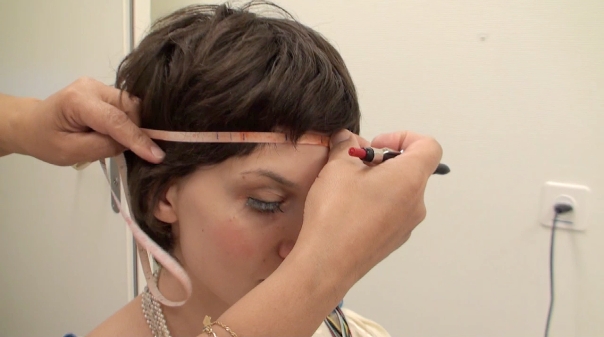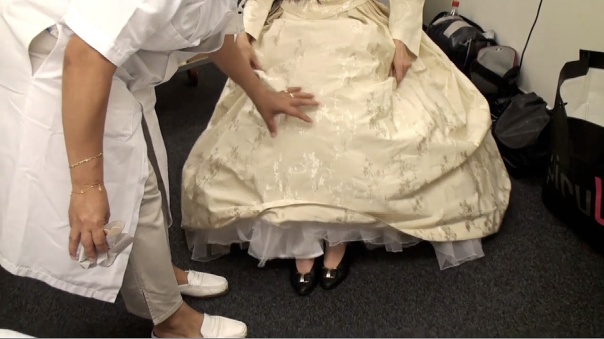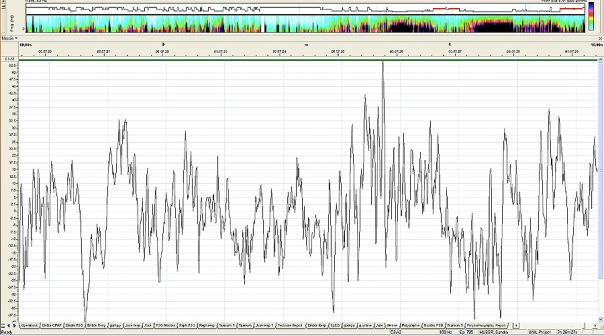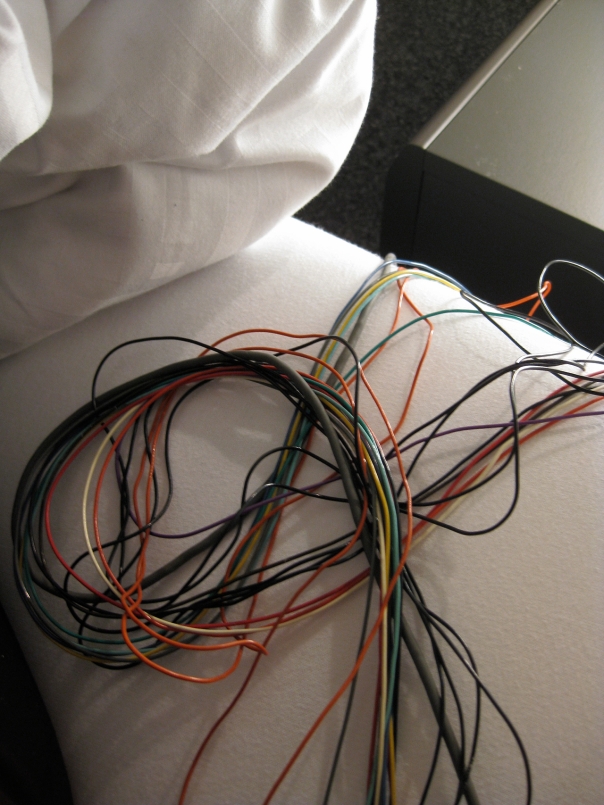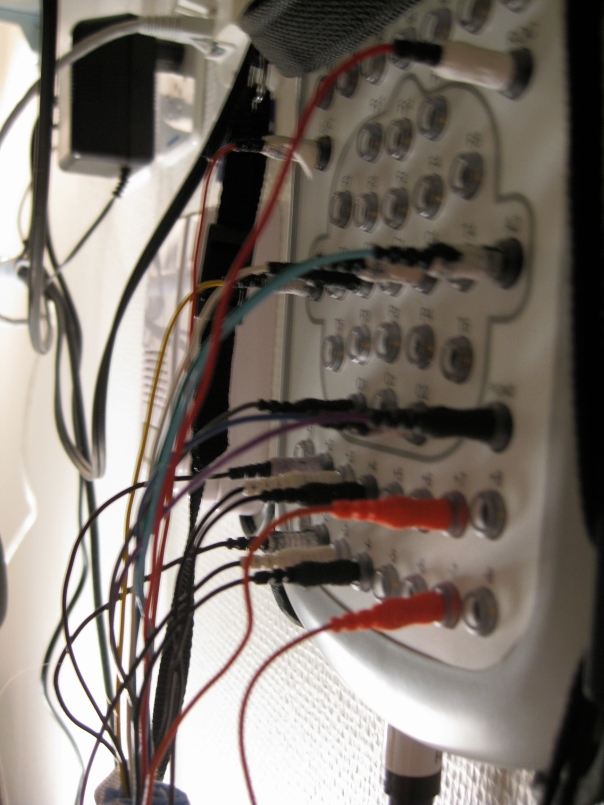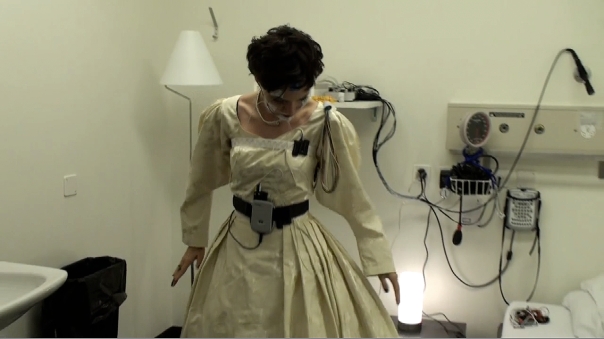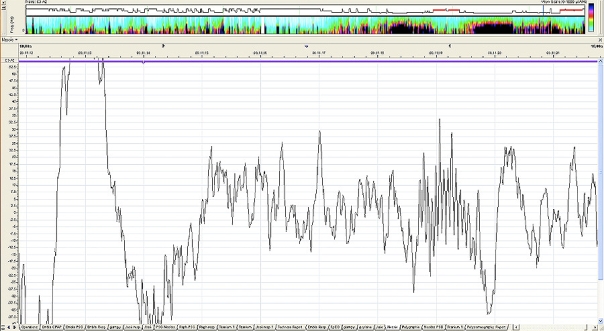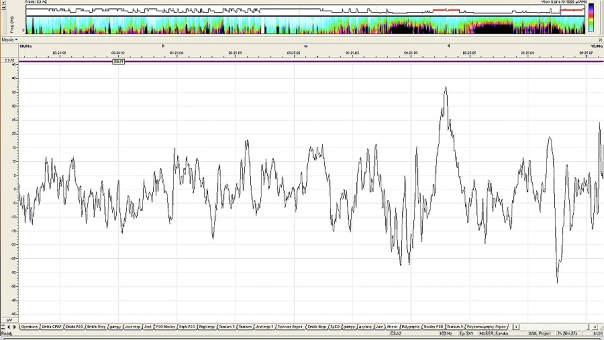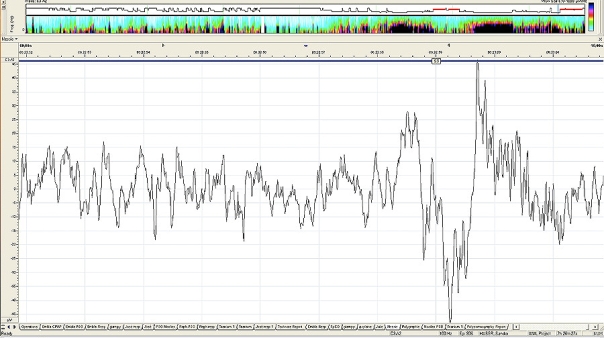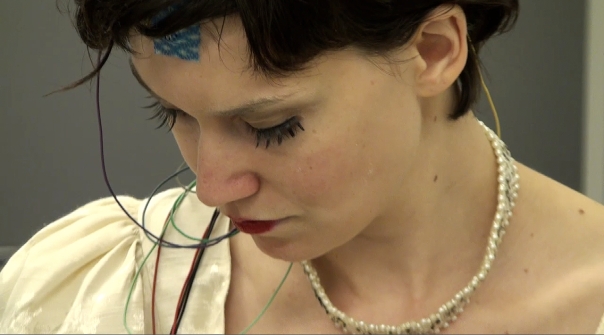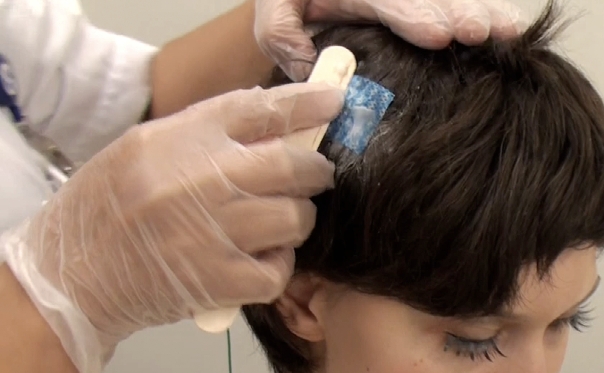(1)
(2)
(3)
(4)
(5)
NOTES
The following notes are edited from emails between Sandra Huber and David Berridge in February 2011, following an invitation from David to make a project for the VerySmallKitchen blog.
SANDRA: The first thing that comes to mind is a project I did, and am still doing, via Artists-in-Labs, where I was a resident poet for 9 months in a sleep laboratory in Lausanne, Switzerland. Basically, I took the brainwaves of myself in sleep and started turning them into words, creating a long and extremely visual poem from the raw data of the EEG… Eventually, and when all goes well, it’ll go up as an installation at the lab where I was working in Lausanne, but I’m always open to other ways of presenting this work, either internet or physical venues.
… I have also thought about doing a physical chapbook of the (long) poem when it’s finished — it would have to be something that folds out somewhat like an accordian: the brainwaves/words running horizontally and intact across the foldable page as if the page is a static screen. On the obverse of the sheet could be a transcription of the words in a very linear fashion so that the reader has a chance to access them.
… We could of course start with a sort of e-book/blogroll of the conceptual side of the project, since a lot of the actual poetry is in progress (i.e. not finished…) Here’s an idea: during the residency at the sleep lab, I became very interested in the concept of “the room” — for example, the physical room of the sleep laboratory, at once made to look home-like and yet undeniably sterile, that I had to spend a night in to get my data. There are also the different stages of sleep (S1, S2, S3 & REM) that seemed like disparate rooms themselves, signaled by particular waves (sigma, delta, theta, etc).
We could work on something that gives a sense of rooms and in each “room” could be found something different: a line of poetry on a brainwave, the physical bedroom of the sleeper, a fragment of text on the science / philosophy of sleep. This also makes me think of what you wrote about what happens when the words break out of the rigid structure of the brainwaves — this entering and exiting of rooms that could sometimes spill over their boundaries… Thots?
DAVID: Would the room be a kind of working proposition for us or would it be apparent in all the posts? I guess we could tie each post to the actual lab room, or – as I read your comments – present a series of “rooms” as distinct spatial-conceptual portions/ propositions: one post the room of the actual room, one of only the text, one of … and so on. Or mixed up…
Have to think how the blog post format would fit this, and also how on the home page it makes columns of the recent posts. I think images and text combinations work well. The format puts quite a bit of clutter around the posts, so have to explore how something using lots of white space and just text would work, for example.
… how to organise it: posts in a series close together or more spread out. What do you think? Could be a residency for a week….
oh yes and what you say about the connections between rooms, waves breaking out…. I wonder how we could suggest that… how would you like to start?
SANDRA: Where to start? A good question… Always the most difficult thing…
I think, with this idea of “rooms” in mind as a platform, we could literally start with the room itself — the sleep room, a mysterious sort of prelude, and some shots of myself, the sleeper (in a sort of cyborgian costume — I was trying to go for something Ada Lovelace-ish), so at first it’s unclear what exactly is being presented but we do have an idea of an unheimlich sort of space, as well as a character/subject of the writing.
We could then go directly into images of the brainwaves, just the raw waves without writing, and some theory, eventually showing how the brainwaves turn into words, i.e. presenting the poetry, and ending on the sketch of the room of the installation. So in a way, having a movement of the general going to the very specific and zooming back out again (the inside of the sleep room ends in the outside of the installation room: science has completely merged with, or been enveloped by, artifice).
Something like this? As for how it looks on the actual website, or if it’s done in a week’s residency or a more spread out form is entirely up to you..


